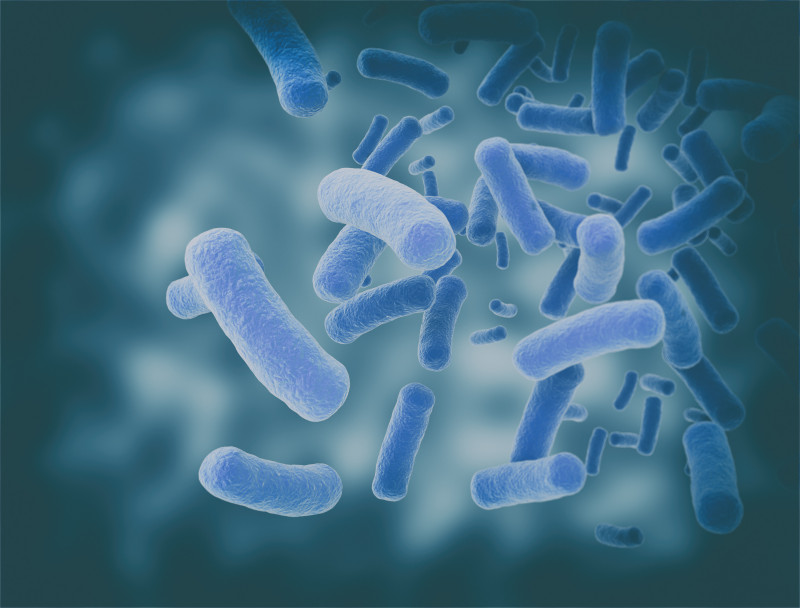Metal in Source Water Tied to NTM Infection in Patients in Colorado

Jezper/Shutterstock
Source water levels of a metal called molybdenum is a significant environmental risk factor for nontuberculous mycobacteria (NTM) infection among people in Colorado with cystic fibrosis (CF), a database study focused on that state reported.
NTM infection, caused by Mycobacterium abscessus (M. abscessus), is a difficult-to-treat bacterial infection, and preventative measures should be promoted, its scientists wrote. The likelihood of infection, for instance, was found to be highest in counties along major rivers.
The study, “Nontuberculous mycobacterial infection and environmental molybdenum in persons with cystic fibrosis: a case–control study in Colorado,” was published in the Journal of Exposure Science & Environmental epidemiology.
NTM are bacteria naturally found in soil, swamps, and water sources worldwide, and can cause chronic pulmonary infection, especially in people with an underlying lung disease such as CF.
While there are many types of NTM, M. abscessus and Mycobacterium avium (M. avium Complex or MAC) are the most common found in CF patients.
In people with CF, NTM lung disease — a general term for lung infections due to mycobacteria — is resistant to treatment, often requiring a prolonged course of antibiotics and hospitalization.
Several environmental factors have been linked to NTM infection and disease, including soil properties. Researchers previously found that the presence of molybdenum in surface water from watersheds in Colorado to be a significant contributor to the risk of NTM infection.
Molybdenum, a metal with wide industrial use, has been suggested to be necessary for the survival of Mycobacterium tuberculosis, an evolutionary related organism to NMT. According to the researchers, it is possible that “molybdenum may promote NTM growth in surface water, thereby increasing the risk of exposure and infection.”
This research team set out to identify other elements in water that could increase the likelihood of an NTM infection of various types of NTM in CF patients living in Colorado, the U.S. state reported to have the highest concentration of molybdenum reserves.
Water-quality data was analysed from the Water Quality Portal (WQP), sponsored by the U.S. Geological Survey, U.S. Environmental Protection Agency, and National Water Quality Monitoring Council.
Data on 388 CF patients came from the Colorado CF Center NTM database between January 2007 and January 2019 . Of these people, 193 had at least one positive culture while the other 195 had at least three negative cultures over at least three years, and served as a NTM-negative control patient group.
Among the NTM-positive group, 147 (76.2%) patients had a MAC infection (M. avium, M. intracellulare, and M. chimaera) and 82 (42.3%) had a M. abscessus complex infection (M. abscessus/chelonae, M. massiliense, M. bolletti). Both MAC and M. abscessus infections were found in 46 patients (24% of 193). The mean age of those with an NTM infection was 37.3, most were women (55.9%), and 96.9% of these people were white.
Researchers statistically analyzed the water concentrations of magnesium, sodium, potassium, and sulfate, cadmium, calcium, chloride, manganese, molybdenum, selenium, zinc, and compared findings with the presence of NTM infections.
Results showed that molybdenum was the only element significantly associated with an increased odds of infection. A CF patient’s likelihood of infection with M. abscessus rose by 79% for every one-unit increase in the logarithmic concentration of molybdenum in surface water, compared with patients who were NTM-negative.
“This study also goes a step further to suggest that molybdenum in surface water may increase the odds of acquiring NTM, specifically for M. abscessus infection, rather than for MAC infection, in a CF population,” the investigators wrote.
The likelihood of M. abscessus infection in CF patients also varied by county, and those with the highest probability of infection were located along the major rivers. These included the South Platte River flowing through Denver, Logan, Sedgwick, and Weld counties, the Colorado River flowing through Mesa County, and the Arkansas River flowing through Pueblo County.
A study limitation was that counties without resident CF patients were excluded from analysis, the researchers noted, and that the results were only based on about half of Colorado’s counties. As such, study findings can only apply to some counties.
Tap water, after filtration and treatment, also may not reflect the composition of source water, the study noted.
Still, “these findings could inform patients at risk for NTM of their relative risks in residing within specific regions” of Colorado, the researchers concluded.







